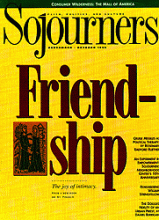The nation's education crisis is great news for Madison Avenue. As school budgets are slashed and teachers are overworked, administrators are all but begging corporate America to fill the financial gap. And big business is only too happy to oblige, providing free equipment, free curricular materials, free video programs, and fund-raising games.
To the casual onlooker, generous companies give schools what they need in return for modest recognition. But the growing "school-business partnership" is neither benign nor altruistic. Rather than solving the education crisis, corporations are exploiting it for profit. From a high school news program that forces students to watch commercials daily to corporate-sponsored curricula designed to serve a company or industry, this new "partnership" is turning teachers and schools into corporate shills and students into a captive market.
Consumers Union reported in 1990 that 20 million school students a year use corporate-sponsored teaching materials--ranging in promotional content from a company's logo on a poster to deliberately slanted information.
Consider some recent examples:
- Christopher Whittle has co-opted more than 12,000 schools nationwide to force his company's Channel One program on their students. Whittle's contract stipulates that students must watch two minutes of advertisements a day in return for free video equipment and a flashy news show. (Whittle's own study found that students exposed to Channel One had little or no better knowledge of current events than those who aren't.)
Read the Full Article

